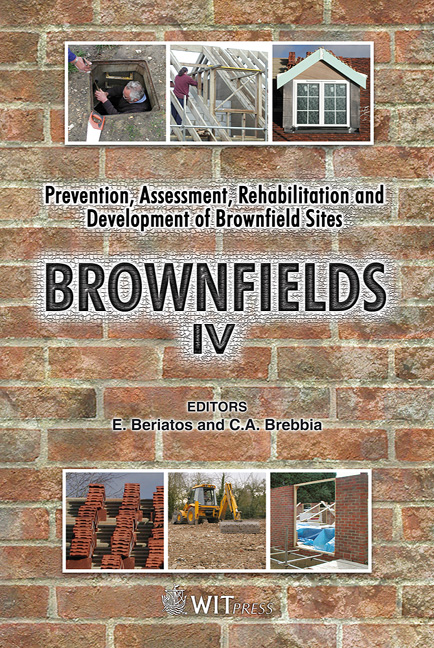Bioremediation Of Maleic Anhydride Contaminated Soil
Price
Free (open access)
Transaction
Volume
107
Pages
5
Page Range
131 - 135
Published
2008
Size
240 kb
Paper DOI
10.2495/BF080131
Copyright
WIT Press
Author(s)
C. Y. Yin, H. S. Ng & S. Abdul-Talib
Abstract
This paper presents a bench-scale study of bioremediation of soil contaminated with maleic anhydride. A quantity of 300 kg of contaminated soil was collected from a petrochemical plant in Malaysia and divided into three portions in order to investigate the effects of nutrient addition as well as mechanical aeration on the biodegradation rate of the contaminants. Online parameters measured included moisture content, redox potential, temperature and pH. The highest first-order biodegradation rate constant was determined to be 6.658 day-1 for soil pile with addition of nutrients and mechanical aeration. Keywords: bioremediation, maleic anhydride, petrochemical industry. 1 Introduction Bioremediation is an established means of treating contaminated soils especially when the contaminants are organic-based. Research in bioremediation is often focused on ex-situ bench-scale studies as such setups facilitate control of important experimental parameters such as temperature and pH. Previous studies on ex-situ bench-scale bioremediation include biodegradation of hydrocarbon petroleum contaminated soil [1], gasoline-contaminated sediments [2] and diesel-contaminated soil [3]. Maleic anhydride is used as a chemical intermediate in the synthesis of fumaric and tartaric acid, certain agricultural chemicals, resins in numerous products, dye intermediates and pharmaceuticals [4]. Its detrimental effects on
Keywords
bioremediation, maleic anhydride, petrochemical industry.




